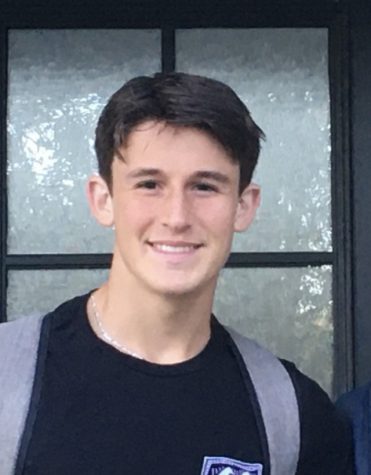Trucker protests extend to Washington
The protests that began in Canada have made their way to the nation’s capitol
Photo courtesy of southcarolinapublicradio.org
Truckers block traffic and shut down major thoroughfares between the U.S. and Canada
March 8, 2022
A convoy of truckers labeled the “Freedom Convoy” arrived in Ottawa, Canada to lead protests on January 28 over multiple COVID-19 mandates requiring truckers passing the America-Canada border to get vaccinated.
On March 5, an American convoy protesting COVID restrictions circled Washington D.C., but not with the aim of halting the city.
The truckers threatened to send a ripple of economic disruption through Canada with their protests, and Canada’s Prime Minister, Justin Trudeau, originally dismissed the protesters as a “small fringe minority.” However, over the next couple of weeks since their initial protests, truckers had blocked up streets in several other Canadian cities, including Quebec City, Toronto and Calgary.
The truckers notably jammed the Ambassador’s Bridge, a vital crossing connecting Detroit, Michigan to Windsor, Ontario.
According to the New York Times “[the bridge] normally carries 300 million dollars worth of goods a day,” and according to NPR, “the bridge carries 25% of all trade between the U.S. and Canada.” It was blocked for a week by the protesting truckers. Due to the blockade, automakers in the area took a blow, as their capacities were reduced and their production delayed.
Truckers are not the only ones protesting, as citizens have joined in support of the “Freedom Convoy.” Millions of dollars have also been raised through donors on websites such as GoFundMe and GiveSendGo in support of the truckers and protesters. Despite the significant impact of the truckers protesting against COVID-19 vaccine mandates, it is estimated that only 10% of truckers remain unvaccinated according to the Canadian Truckers Alliance(CTA).
The CTA moreover stated that many protestors, “have no connection to the trucking industry and have a separate agenda beyond a disagreement over cross border vaccine requirements.”
The protests began to cause damage to the cities that they were located in. Street after street was blocked off by trucks and protestors, and some protestors were allegedly carrying weapons such as grenades. Citizens residing in the Canadian cities could not leave their streets, and truck horns blared for most hours of the day.
After weeks of protest, on February 14, Mr. Trudeau invoked the federal Emergencies Act, which gives the Canadian government the power to mobilize law enforcement, including the military, to control the protests. Under the Act, the government furthermore has the power to cancel license and registration of protestor’s trucks as well as remove their insurance and freeze the bank accounts of protestors.
“Today, in these circumstances, it is now clear that responsible leadership requires us to do this,” Trudeau said in regards to declaring a national state of emergency. “These blockades are illegal and if you are still participating, the time to go home is now.”
Amid the “Freedom Convoy” blockade, Ottawa police chief Peter Sloly resigned due to criticism of the police force’s failure to remove the protesters, which added to the hectic state of the city. On February 16, protesters were ordered to move or face criminal charges. The next day, multiple individuals were arrested for demonstrations in Ottawa, including Tamara Lich and Chris Barber, both organizers of the protests. Lich would later be denied bail, and Barber would be released on bail days after his arrest.
Finally, police halted a majority of the chaotic protests over the weekend of February 19. According to a Fortune article detailing the conclusion of the protests, Ottawa police recorded 191 total arrests, with 389 charges against 103 of those people. At least 70 vehicles were towed away. The police utilized pepper spray and stun grenades to disperse crowds around the capital. These events occurred days after 206 corporate and bank accounts were frozen because of activity regarding funds in support of the protests.
Since the “Freedom Convoy” protests opposing COVID-19 regulations in Canada have calmed, blockades have sprung up in European countries. In the capital cities of countries such as France, Belgium, Austria, New Zealand, the Netherlands and Australia, there are truckers and citizens protesting COVID-19 regulations. In the United States, Reuters reports that there is a “People’s Convoy,” of “more than two dozen 18-wheeler trucks, along with some 50 pickups and recreational vehicles”, inspired by the Canadian protests, on their way to Washington from California.
According to Reuters, in anticipation of the March 5 protest in Washington, the Pentagon approved the deployment of weaponless National Guard troops and tactical vehicles to traffic posts throughout the District of Columbia.
Similar to the convoy in Canada, the American protestors demand the ending of emergency declarations and meeting with lawmakers. However, the American group has vowed not to block traffic and disrupt daily life in the nation’s capitol.
As of March 7, protestors were continuing to circle the Beltway in the hopes of drawing attention.







